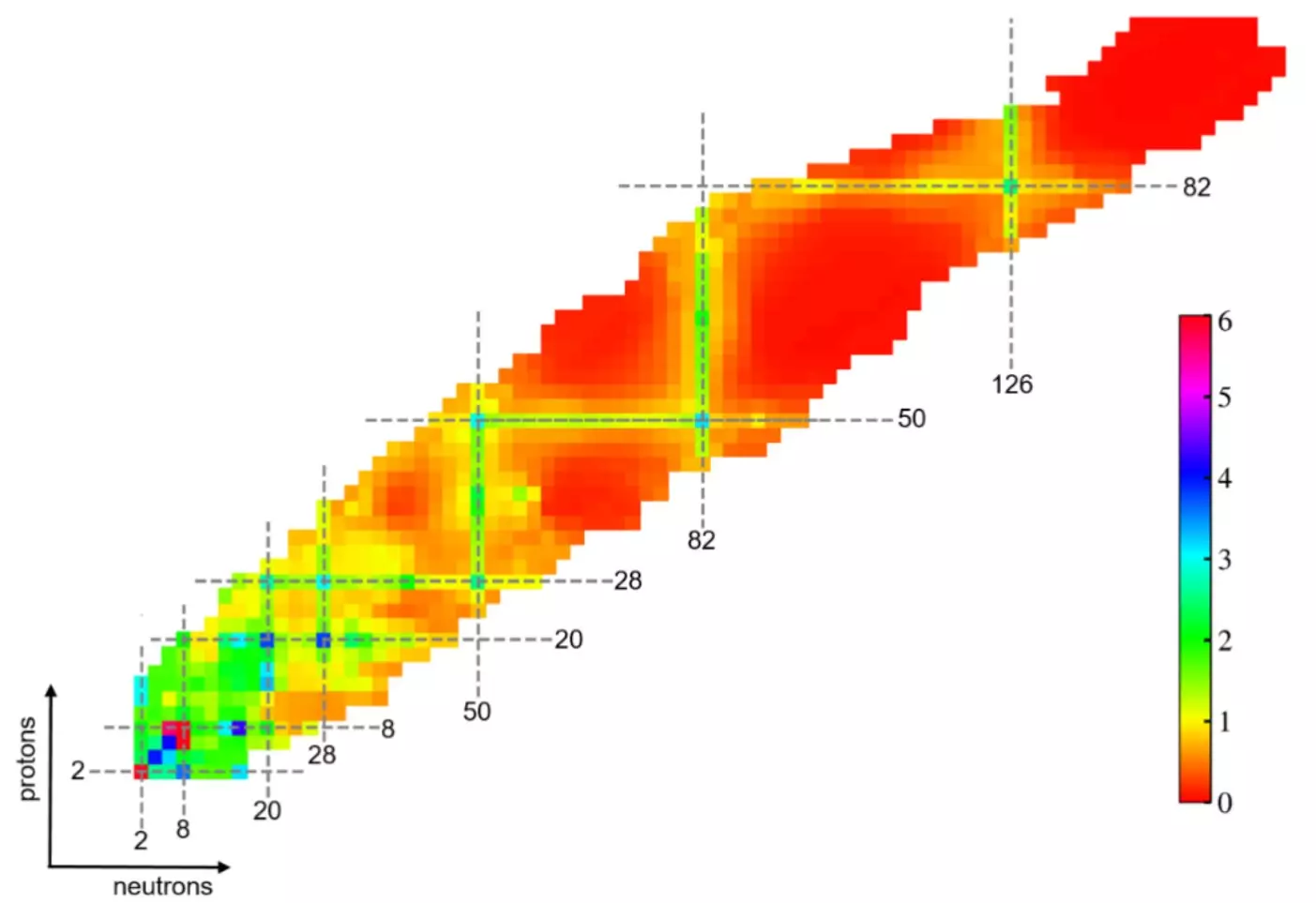The intricate world of atomic nuclei has long captivated scientists, revealing a complex interplay of protons and neutrons that defines the stability and characteristics of various elements. John Archibald Wheeler’s adage, “the universe is a giant atom,” encapsulates the remarkable parallels between physical structures and the atomic realm. In a groundbreaking study led by researchers from the Institute of Modern Physics (IMP) of the Chinese Academy of Sciences, Huzhou University, and the University of Paris-Saclay, innovative machine learning techniques have been employed to redefine our understanding of nuclear stability, particularly focusing on the elusive magic numbers that govern shell structure.
Magic numbers are specific numbers of nucleons (protons plus neutrons) that confer enhanced stability on atomic nuclei. Discovered in the 1930s, these numbers (2, 8, 20, 28, 50, 82, and 126) represent configurations that lead to closed shells, akin to noble gases in chemistry. They signify nuclear configurations that are energetically favored and form the foundation for existing nuclear models. However, as experiments probe nuclei far from stable configurations, physicists have begun to question whether traditional magic numbers maintain their significance. This study has brought to light the impressive double-magic nature of tin-100 and the unexpected disappearance of the magic number 20 in oxygen-28, challenging long-held assertions in nuclear physics.
The integration of machine learning into nuclear physics represents a profound shift in methodology. Traditionally reliant on empirical data and theoretical modeling, researchers now harness algorithms to analyze vast datasets with unprecedented accuracy. Within this study, the researchers employed machine learning to explore the energy levels of excited states within even-even nuclei, achieving remarkable precision that surpasses previous nuclear models. “We analyzed a multitude of features inherent to atomic nuclei,” remarked Wang Yongjia from Huzhou University, highlighting the significance of their findings. This innovative approach not only enhances predictive capabilities but also allows for a re-evaluation of the nucleus’s fundamental characteristics, ultimately refining our understanding of its complex behavior.
The research yielded critical insights that challenge the previously accepted notions of magic numbers. The vanishing of the neutron magic number 20 in oxygen-28 suggests that our understanding of nuclear binding energies and configurations is not fixed but rather evolves with the composition of the nucleus. This revelation has profound implications, including predictions about isotope stability and potential applications for future nuclear technology. Conversely, tin-100 retained its traditional magic number 50, suggesting that certain configurations may remain resilient even as we explore unstable nuclei.
These findings emphasize the necessity for continued exploration into the depths of nuclear structure and the applicability of machine learning within experimental settings. The insights gleaned from this study are poised to inform upcoming experimental measurements of low-lying excited states and transition properties of atomic nuclei, especially in facilities like the High Intensity Heavy-ion Accelerator Facility in China. As researchers continue to unearth the subtleties of nuclear physics, the consequences extend beyond theoretical knowledge; they hold potential implications for advancements in nuclear medicine, energy production, and fundamental physics.
The application of machine learning to investigate the evolution of shell structure within atomic nuclei marks a pivotal moment in the field of nuclear physics. As researchers grapple with the implications of emerging findings—ranging from the double-magic nature of tin-100 to the elusive behavior of oxygen-28—they are presented with an opportunity to redefine our understanding of magic numbers and nuclear stability. While the journey is far from over, this study lays a foundational bedrock upon which future research can build, altering our perspective on atomic structure and the phenomena that govern it. The ongoing interplay between technology and theoretical physics will undoubtedly continue to reveal the hidden layers of the atomic world, making the coming years an exhilarating time for nuclear science.


Leave a Reply